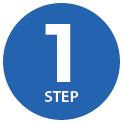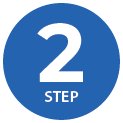
Improve Your Writing Skills
You can gain the skills you need to produce well-written documents.
By completing the program, you will:
- Gain a better understanding of grammar, sentence structure, and writing.
- Enhance your writing skills.
- Demonstrate your dedication to lifelong learning and professional development.
- Fulfill one of four mandatory training requirements for the state's Administrative Assistant Traineeship.
You can expect to enhance your job-based skills in the Verbal and Written Communication workforce development competency.
Required Courses
Explore all the courses you'll take in this program. You'll find the course name, a description, and the length of time it will take to complete each course below.
Abbreviating, Capitalizing, and Using Numbers (0.4 Hours)
No doubt you've had to use abbreviations, capital letters, and numbers in your business writing. But are you using them correctly? This course presents the basic rules related to capital letters, abbreviations, and numbers. It covers abbreviations of titles, names, locations, and countries, as well as how to capitalize direct quotes, titles, names of organizations, and product names, among other elements. In addition, you will be introduced to the forms and uses of numbers with dates and time, money, fractions, and symbols.
Clarity and Conciseness in Business Writing (0.3 Hours)
Being clear and concise in business writing isn't always easy. But writing well is essential in the workplace if you want what you write to be read, understood, and acted upon. In this course, you'll learn how improving your communication skills through better writing techniques can make your message clear and comprehensible. You'll learn how your written communication is more effective when you understand the importance of using familiar, concrete, and specific language. You'll also explore tips for being more concise in your writing and best practices for organizing content.
Creating Well-Constructed Sentences (0.4 Hours)
Syntax is the grammatical term for arranging words to create logical phrases, clauses, and sentences. Well-constructed sentences express an idea by using the parts of speech in a logical and clear order. A misplaced modifier might get a chuckle out of the reader, but it doesn't help your reputation or that of your company. In this course, you'll review basic sentence construction, including how to develop sentences that are logical, clear, and powerful – the basis of any sound business document. The course examines the parts of a sentence – the subject and predicate, for example – and distinguishes between phrases and clauses. It shows the importance of subject-verb agreement, as well as agreement between pronouns and their antecedents. You'll also find out how to identify and fix common types of sentence errors.
Editing and Proofreading (Business) Documents (0.4 Hours)
Have you ever distributed a document or message only to find later that you forgot to include a key point or correct an embarrassing spelling error? Taking the time to edit and proofread your writing will help you produce more focused, polished, and effective business documents. This course describes how to edit and proofread effectively, covering key areas such as tone, structure, clarity, and accuracy, as well as common grammar, punctuation, and spelling mistakes.
Getting the Details Right: Spelling Basics (0.3 Hours)
Spelling errors are all too common. A wrong letter here, an extra letter there, and your reader loses faith. Knowing the rules, as well as the exceptions, when it comes to details like spelling can help you write clearly without errors. This course explains how to spell words with prefixes and suffixes and how to form the plural and possessive forms of words. It also covers general rules on how to spell correctly and presents tips to help you become a better speller.
Outlook Office 365 (Windows): Proofing Email (0.3 Hours)
With Outlook's suite of proofing and review tools, you can be sure that the emails you send will be clear, accessible, and error-free. Learn how to check your spelling and grammar, use the lookup, translation, and thesaurus tools, and make your message accessible to all recipients.
Taking Effective and Professional Notes (0.3 Hours)
Skilled notetaking can make you more productive in business situations. Writing notes and engaging in written communication also provide an effective record to review when necessary. In this course, you'll learn tools, techniques, and grammar strategies for effective notetaking in interviews and meetings. You'll also learn ways to write notes that help you learn and recall information to make it easier to communicate to others.
Troublesome Words and Phrases: Common Usage Mistakes in Writing (0.3 Hours)
The many nuances and conventions in the English language make it diverse and interesting; however, when it comes to writing well, they can also cause some difficulties. For better writing skills, you must familiarize yourself with some of the most common errors of usage. In this course, you’ll learn how to use commonly confused words correctly, including word pairs that sound alike and those that have related meanings. You’ll explore often misused verbs – for example, affect and effect or apprise and appraise – that can impede professional business writing. You’ll also learn some idiomatic combinations of verbs and prepositions that can be confusing and will put your communication skills to the test.
Using Punctuation Marks (0.3 Hours)
Punctuation is the collection of marks used to separate sentences and their parts. Appropriate punctuation will make your meaning clear and less likely to be misinterpreted. This course covers the standard rules and guidelines for using punctuation marks, including the correct use of periods, question marks, and exclamation points. It also covers how to correctly use commas, one of the most common punctuation marks. The course includes rules for using different connecting and separating marks, such as colons, semicolons, dashes, and hyphens. In addition, it shows how to properly use apostrophes, parentheses, brackets, and quotation marks.
Using the Parts of Speech (0.3 Hours)
Effective business writing is one of the most important communication skills in the workplace today. By writing well, using clear sentences and correct grammar, you can ensure your message is communicated to and understood by your intended audience. Unfortunately, the opposite is also true – poorly structured sentences can not only cause confusion but may also damage your reputation. In this course, you’ll learn about the fundamental elements for better writing – the parts of speech. These are the building blocks of sentences, so learning about them can help you skillfully combine words into meaningful sentences. This course describes the eight parts of speech and shows how to use them effectively and correctly.
Writing Effective E-mails and Instant Messages (0.3 Hours)
Email has become an indispensable communication tool for organizations and plays a vital role in how they conduct business and maintain their operations. As a result, one of the most important communication skills to have in the workplace today is email etiquette. It can help ensure you get messages across quickly, appropriately, and concisely. In this course, you’ll learn some tried and tested guidelines for writing emails. You’ll explore the fundamental elements of written communication that every email should contain, and the importance of keeping emails concise. The course also covers the etiquette associated with using instant messaging programs as an extension of email.
Writing with a Professional Mindset (0.5 Hours)
In an era where written communication is pervasive, a professional mindset can set you apart and make you a valued asset in your organization. Writing professionally, clearly, lucidly, and concisely will help you align your written communication with the goals of your organization and demonstrate your competence and commitment to clear and effective communication. In this course, you’ll learn the essential aspects of effective professional communication and strategies to craft effective and professional written communication. You’ll also learn how various channels of communication can be optimized for impactful professional writing and explore best practices for improving your professional writing skills.
Optional Learning
Want to learn more? Once you've completed all of the required courses, consider continuing your learning with the following optional activities. Unlike the required courses, you do not need to complete these to earn your certificate.
Digital Books and Videos
Discover a world of resources with the Empire KnowledgeBank (EKB) and Skillsoft eBook and Video Portal. Search EKBSS_TMPL20150123135209420 in SLMS. You'll gain access to the following free digital books and online videos, as well as thousands more! Get directions for using the EKB and Skillsoft eBook and Video Portal.
Recommended Reading
- Writing at Work: How to Write Clearly, Effectively and Professionally, by Neil James
- Business Writing for Dummies, 2nd Edition, by Natalie Canavor
- Better Sentence-Writing in 30 Minutes a Day, by Dianna Campbell
- Grammar for Dummies: 1,001 Practice Questions, by Geraldine Woods
Recommended Videos
- Five Best Practices to Prevent Business Writing Blunders, by Dianna Booher (3:00)
- Using Outlines to Improve Communication, by Heide Abelli (3:00)
- Writing Emails That Get a Response, by Diane Darling (2:00)
- Writing for Business, by Des Dearlove (3:00)
Training
These courses are offered by the Partnership and are open to all CSEA-represented NYS employees. Webinars can be taken from any device with a connection to the internet. You can also view recordings of webinars.
Recommended Courses
- Avoiding Common Punctuation and Grammar Mistakes (Webinar)
- Essentials of Report Writing (Webinar)
- Expanding Your Vocabulary (Webinar)
- Grammar and Punctuation Workshop
- Professional Email That Gets Results (Webinar)
- Successful Business Writing (Online)
- Writing Effective Reports and Evaluations
- Crafting Powerful Writing: Precision and Clarity (Webinar)
YouTube Videos
Eligibility

All CSEA-represented NYS employees are eligible to participate.
Management/Confidential NYS employees with an Empire KnowledgeBank (EKB) license are also eligible to participate. Contact your agency training officer for information on obtaining an EKB license.
Supervisory approval is not required for courses taken outside the normal workday. It may be possible for employees to take courses during working hours with supervisory approval.
How it Works
Register for the program anytime between now and February 12, 2026.
Take all the required courses online in SLMS anytime from February 14, 2025 to February 13, 2026.
To earn a certificate, you must complete all 12 courses and achieve a passing grade of 70% or higher in each course by the program's end date of February 13, 2026.
To print your certificate, log in to SLMS, go to the My Learning page, locate the appropriate certificate program, and select the Print Certificate button. The Print Certificate button will only be available if the status is Completed.
Register
To participate, you must follow our two-step registration process. The first step varies for CSEA-represented NYS employees and Management/Confidential NYS employees.

CSEA-represented NYS employees: Apply for a Partnership Online Learning License in the Statewide Learning Management System. Search P_OL_Program in SLMS. Please allow up to five business days for license approval.
NYS Management/Confidential Employees: Contact your agency training director to obtain an Empire KnowledgeBank license if you don't have one already.

Once you have an active license, you can register for the program in SLMS. Search P_SBW25 in SLMS.
Technical Support and Questions
Please be sure you're using Google Chrome to access SLMS. If you don't have the internet browser on your computer now, submit a ticket to ITS to have it installed.
You will not be able to access any of the courses in the certificate program until you have followed the two-step registration process noted above. Please allow up to five business days for license approval. New state employees typically won’t get access to SLMS until after their first paycheck.
Still need help or have questions? Contact us at (800) 253-4332 or email [email protected].